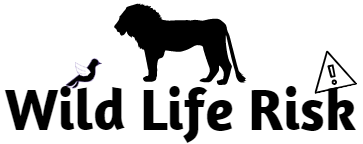Tips on What to Feed Your Dog

While there are a variety of potential diets that are recommended by the vets, you should always choose the food that is suitable for your four-legged companion, and for that, you certainly need some guidance.
In this blog, we recommend some tips that would help you to make an informed decision regarding food for your pet.
How Much Food is Needed by Your Dog?
Well, it usually depends on the size, breed, and age of your dog. Sometimes, it also depends on how much your dog exercises. The key is to ensure that you don’t underfeed or overfeed your dog and your vet will help you regarding your dog’s need.
On one hand, feeding too much can cause heart disease, diabetes, arthritis, or obesity. On the other hand, feeding too little may cause some serious diseases including cancer, various systemic infections, liver and kidney failure, or dental diseases.
Read more: Some Common Mistakes that You Do While Choosing Food for Your Dog
Some Important Tips for Choosing Dog’s Food
Now before being particular for choosing a specific diet, you first need to know what dogs usually eat. Here are some important tips that would help you in this regard.
- Firstly, the most important tip to keep in mind is that you should never assume that all the dogs are the same. In fact, it is more likely that your dog doesn’t eat the food which your neighbor’s dog does. Usually, pet dogs are largely carnivores eating some omnivorous foods.
- You can feed your dog a pure kibble diet or can mix their diet up with some cooked or raw meat such as boiled chicken or lamb, fish, vegetables, and rice.
- Always choose human-grade meat because some pet meat and bone products do contain preservatives that might prove bad for your dog’s health.
- Avoid feeding cooked bones or toxic substances such as onion sauces that might be present on the meat. This may affect the digestive system of your dog.
- Always keep appropriate and fresh food hygiene because the food-borne bacterial infection such as campylobacter or salmonella might attack you or your dog.
- Always search for fish bones first for your dog. If you don’t find them, you may lead towards tinned sardines, tinned tuna, and tinned salmon that might be fed as an occasional treat to your dog.
- You may add cooked pumpkin or grated carrot to your dog’s food which is very beneficial for your dog’s bowel health.
- Sometimes, consuming the whole bone might result in constipation. Keep your dog away from this practice! This tip would prove very effective in keeping your dog healthy.
- Generally, you should present one or two bones per week to your dog. This will help in removing plaque from your dog’s teeth.
- It is recommended that the bone that you give to your dog should be large than their mouth. This will reduce the chances of bone getting stuck in their mouth.
- Usually the bone should be raw. The cooked bone can splinter, causing internal damage or obstruct the intestine, both of which can be fatal.
Tips For Choosing Healthy Dog Treats
Here are some tips for choosing a healthy dog treat.
1. Look at the Ingredients: This is probably the most important thing you can do. Don’t think you can ignore the ingredients just because it’s “only a treat”. Treats play a significant part in most dogs’ diets. You want to look for all-natural or organic bulk dog treats. They should be made with natural or organic ingredients.
2. Calorie Count: Make sure you look at the calories of the treat. An overweight dog is an unhealthy dog and you will end up paying more in vet bills later on if you indulge your dog with fatty treats. Luckily, most healthy dog treats take calorie count into consideration, and therefore most are low in fat and calories.
3. Texture: This might not seem very important, and indeed ingredients and calorie count are more significant when it comes to choosing a healthy or organic dog treat. But the texture is worth mentioning. A more firm or hard treat is much better for your dog’s dental health than a soft treat.
Read more: 6 Common Deadly Diseases in Dogs – Symptoms & Treatment







